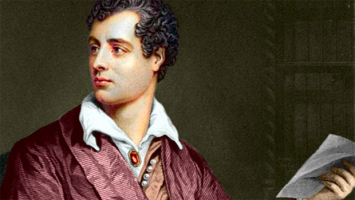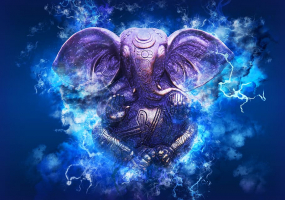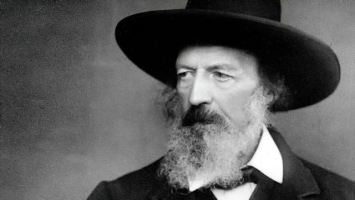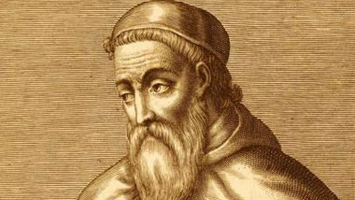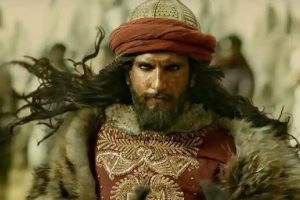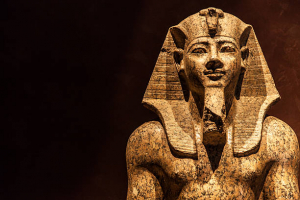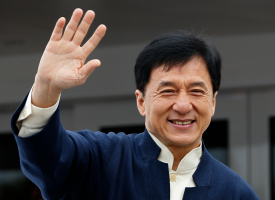Top 10 Interesting Facts about Lord Ganesha
Our today topic is interesting facts about Lord Ganesh. Ganesh Chaturthi (pronounced "GAN-esh CHA-tur-tee") is celebrated on September 10th. That indicates ... read more...it's the birthday of the Hindu god Ganesh. Many Hindus around the world observe the festival by praying, singing, and dancing. Continue reading to learn more about the god who inspired this unique event.
-
Lord Ganesha, the revered deity, is known as the remover of obstacles in Hindu culture. According to Vedic texts, the various gods are likened to administrators of the cosmic machine, with each deity representing or overseeing different aspects of life.
Ganesha's prominent role as the remover of obstacles makes him a cherished figure among Hindus. Before embarking on significant endeavors, whether in business, marriage, or childbirth, many devotees worship him, seeking his divine blessings for success and a smooth journey.
Beyond material pursuits, Ganesha holds a profound spiritual significance. As the remover of obstacles on the soul's transcendent journey, he is revered by aspiring transcendentalists worldwide. His benevolent influence is sought to overcome inner hindrances and progress on the path of spiritual enlightenment.
Ganesha's association with esoteric knowledge further elevates his esteemed position. Often regarded as the presiding deity of astrology, he is venerated by practitioners of Vedic science who believe in his intimate understanding of how celestial bodies influence the karma and destiny of each soul.Every year, Lord Ganesha is celebrated with great fervor during the 10-day festival of Ganesha Chaturthi, commemorating his birthday. This joyous occasion brings devotees together in honor of the beloved deity, further strengthening the bond of love and reverence towards Ganesha.
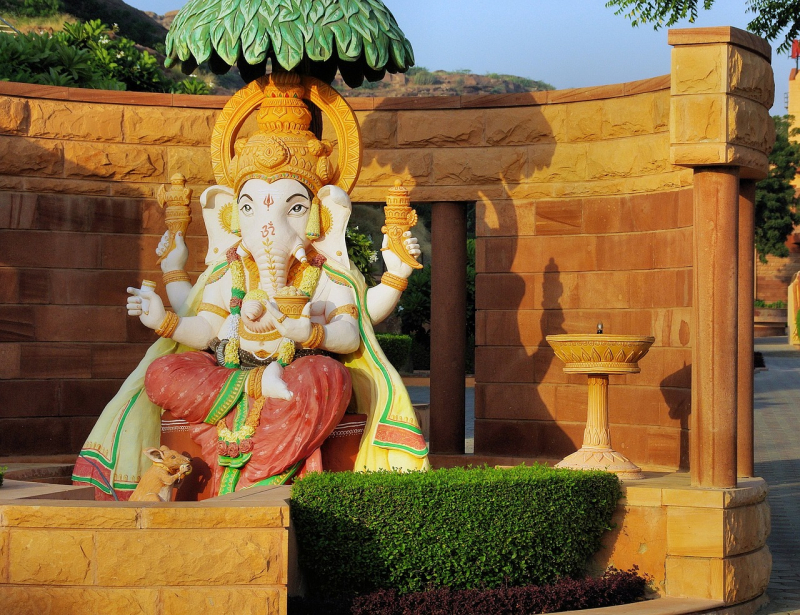
Image by DEZALB from Pixabay 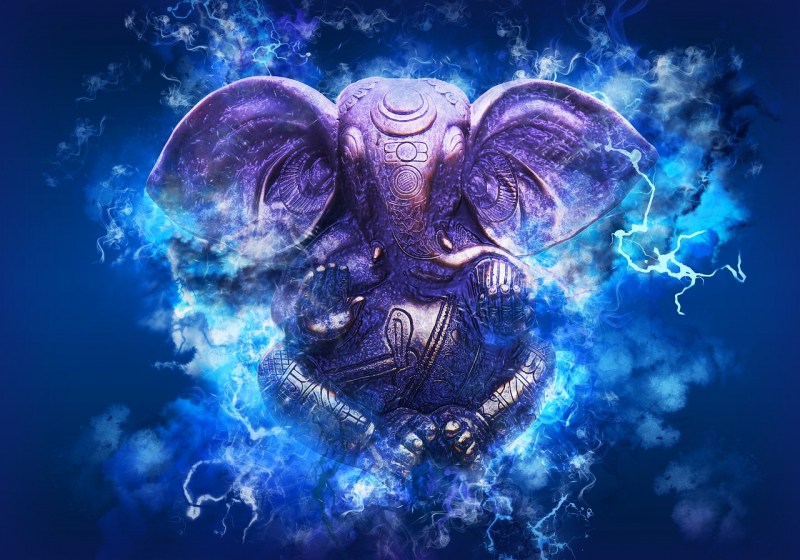
Image by Pete Linforth from Pixabay -
Lord Ganesha, with his endearing elephant head, is one of the most beloved and widely worshipped figures in Vedic culture. However, the origin stories of Ganesha found in Hindu texts may appear contradictory, adding to the intrigue surrounding this auspicious deity.
In one account, the devas sought Shiva's assistance to protect them from demons, leading Shiva to create a radiant child with an elephant head and a trident. Ganesha, the mind-born son of Shiva, became the guardian of the gods and was hailed as a protector by all. Parvati, Shiva's wife, emphasized that success in any endeavor, whether divine or human, required prayers to Ganesha, and Shiva appointed him leader of the celestial hordes.
Another version presents Parvati's involvement in Ganesha's creation. Feeling left out, she willed Ganesha's head to transform into that of an elephant's, demonstrating her love for the unique child and declaring that prayers to him were essential for achieving success.
Perhaps the most widely known origin story centers on Parvati's spontaneous creation of a boy from oil and dust while Shiva was away. She brought the boy to life and claimed him as her son, instructing him to stand guard while she bathed. When Shiva returned, not recognizing Ganesha as his son, he grew furious and a battle ensued, leading to the boy's decapitation. Upon realizing the truth, Shiva revived Ganesha by placing an elephant head on his body. This event is often viewed as a symbol of transformation on the spiritual path.
While these origin stories may seem contradictory, they serve as vehicles to convey moral lessons and highlight the diversity and pluralistic nature of Hinduism. Each narrative brings forth unique aspects of Ganesha's persona, emphasizing his role as a protector, a symbol of devotion, and a catalyst for transformation in spiritual journeys.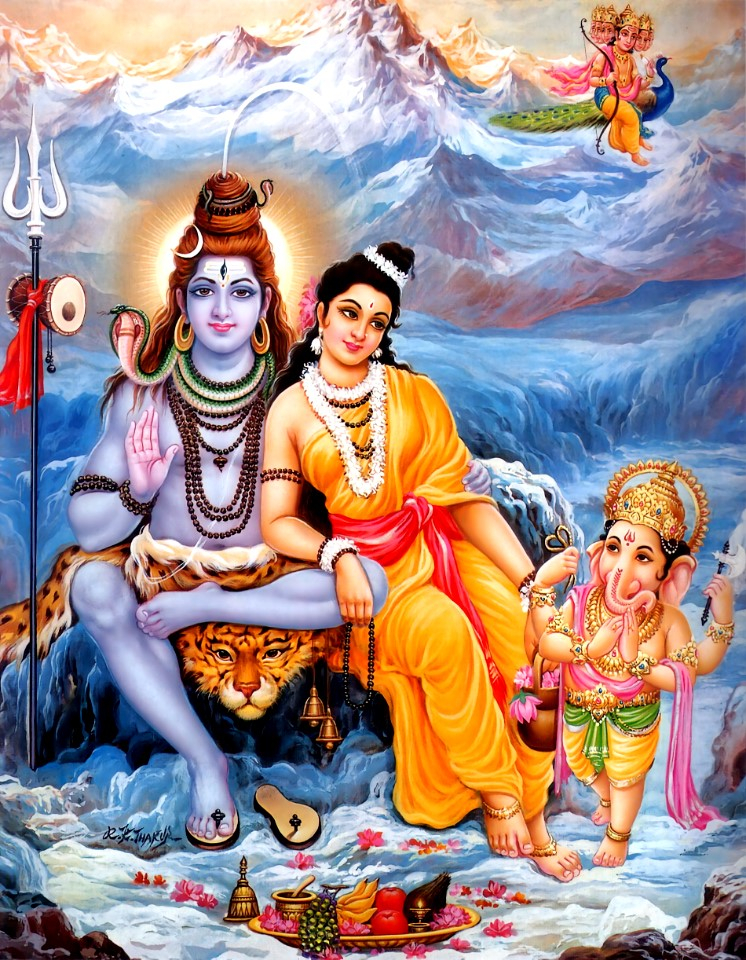
Shiva-Parvati with Sons - Photo on Creazilla (https://creazilla.com/nodes/3145648-shiva-parvati-with-sons-illustration) 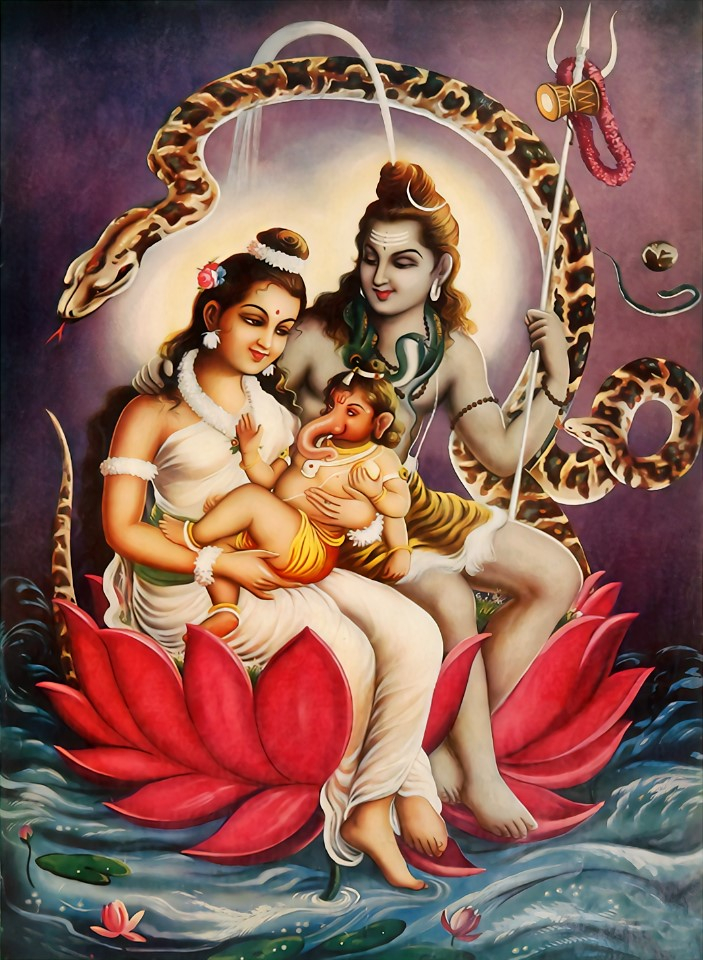
Goddess Parvati with Shiva and baby Ganesh - Photo on Creazilla (https://creazilla.com/nodes/3145551-goddess-parvati-with-shiva-and-baby-ganesh-illustration) -
Lord Ganesha had a significant contribution to the creation of the Indian epic, The Mahabharata. As a deity renowned for his sharp memory and subtle intellect, Ganesha played a pivotal role as the scribe when Vyasadeva was divinely inspired to author the grand epic.
When Vyasadeva sought Ganesha's assistance in transcribing The Mahabharata, the benevolent deity agreed on one condition - Vyasadeva had to narrate the entire epic without any interruptions. Understanding the gravity of the task, Vyasadeva consented, eager to bring the epic to life.
In return, Vyasadeva posed his own condition to Ganesha - to write down each stanza only after fully comprehending its essence. Ganesha, known for his wisdom, gladly accepted the challenge, determined to uphold the sanctity and profundity of the epic.
To fulfill his role as the scribe, Ganesha ingeniously broke off his own tusk, using it as a makeshift pen. This act symbolized his dedication and sacrifice for preserving the timeless wisdom within The Mahabharata.
Throughout the transcription process, Vyasadeva skillfully wove particularly complex clauses into the narrative, prompting Ganesha to pause and fully grasp the meaning. This clever interplay allowed Vyasadeva brief moments of respite during the epic's extensive narration.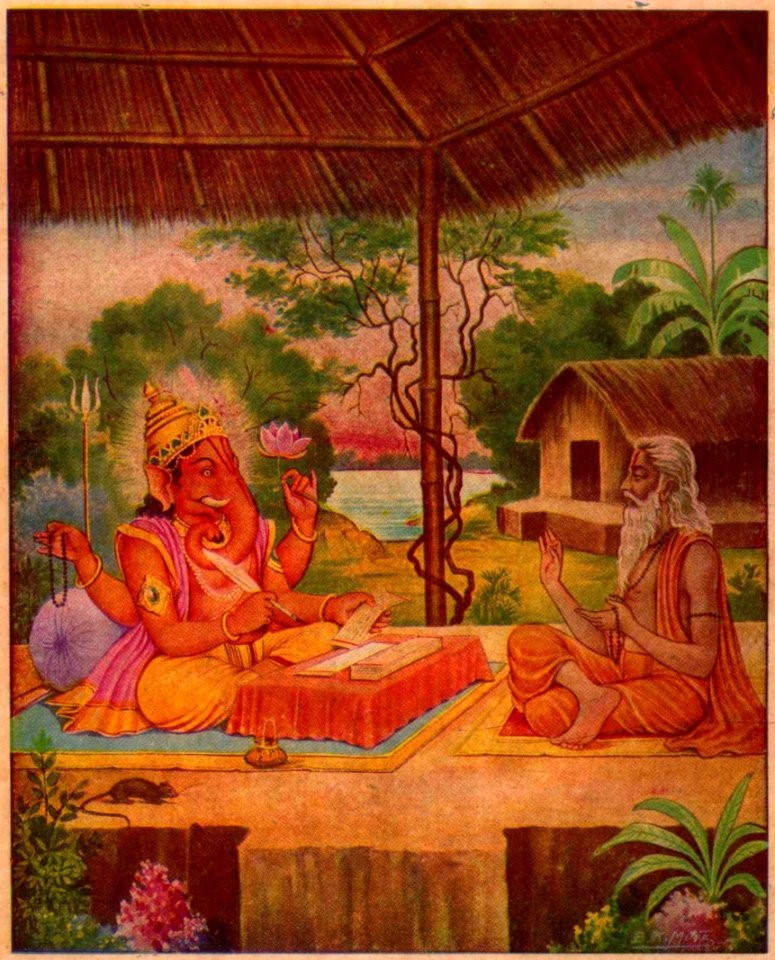
Ganesha writes Mahabharata - Photo on Creazilla (https://creazilla.com/nodes/5455529-ganesha-write-mahabharata-illustration) 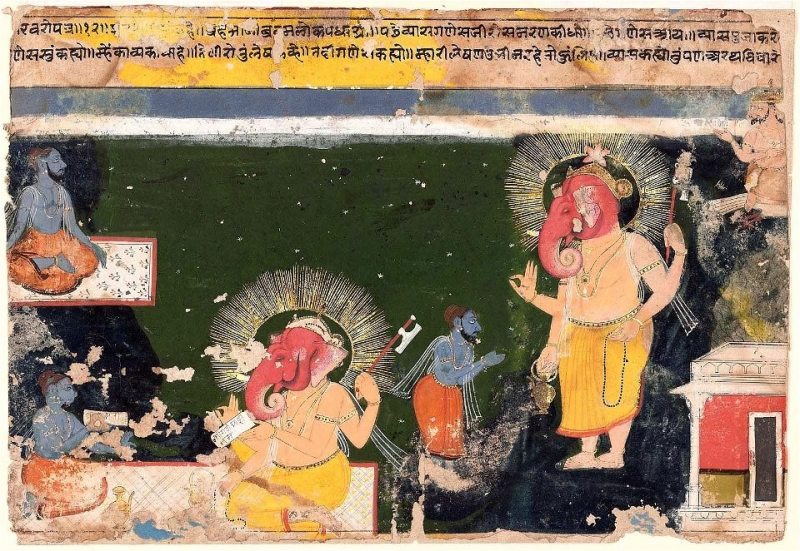
Ganesha writing Mahabharata - Photo on Creazilla (https://creazilla.com/nodes/6806101-ganesa-writing-the-mahabharat-illustration) -
Lord Ganesha's widespread popularity transcends religious boundaries. Not confined to Hindus alone, the Elephant God also appears as the Buddhist deity Vinayaka in the context of Mahayana Buddhism, showcasing his enduring cultural significance.
In the realm of Mahayana Buddhism, Lord Ganesha takes on the persona of Vinayaka and is often depicted in joyful dancing postures. This portrayal emphasizes his benevolent and auspicious attributes, making him an integral figure in Buddhist traditions as well.
Despite originating in Hindu mythology, Ganesha's divine presence has distinct regional characteristics in various Mahayana Buddhist communities, particularly in Tibet, China, and Japan. Each region offers unique interpretations and artistic representations of the beloved deity, showcasing the diversity of reverence and devotion.
A remarkable historical artifact highlighting Ganesha's connection to Mahayana Buddhism is the earliest known stone statue of the Elephant God found in North China, dating back as early as AD 531. This discovery stands as a testament to the enduring cultural exchange between Hinduism and Buddhism.
The multifaceted appeal of Lord Ganesha extends beyond the confines of Hinduism, as evidenced by his role as the Buddhist god Vinayaka in Mahayana Buddhism. Embraced by diverse cultures and communities, Ganesha's presence in various forms and artistic expressions exemplifies his timeless and universal significance.
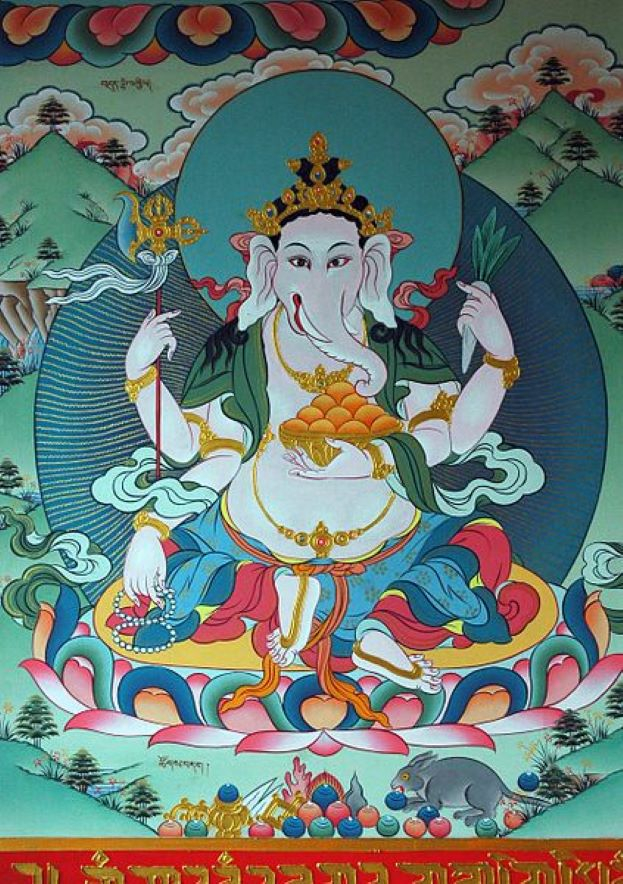
Buddhist Ganesha - Photo on Wikimedia Commons (https://commons.wikimedia.org/wiki/File:Buddhist_Ganesha.jpg) 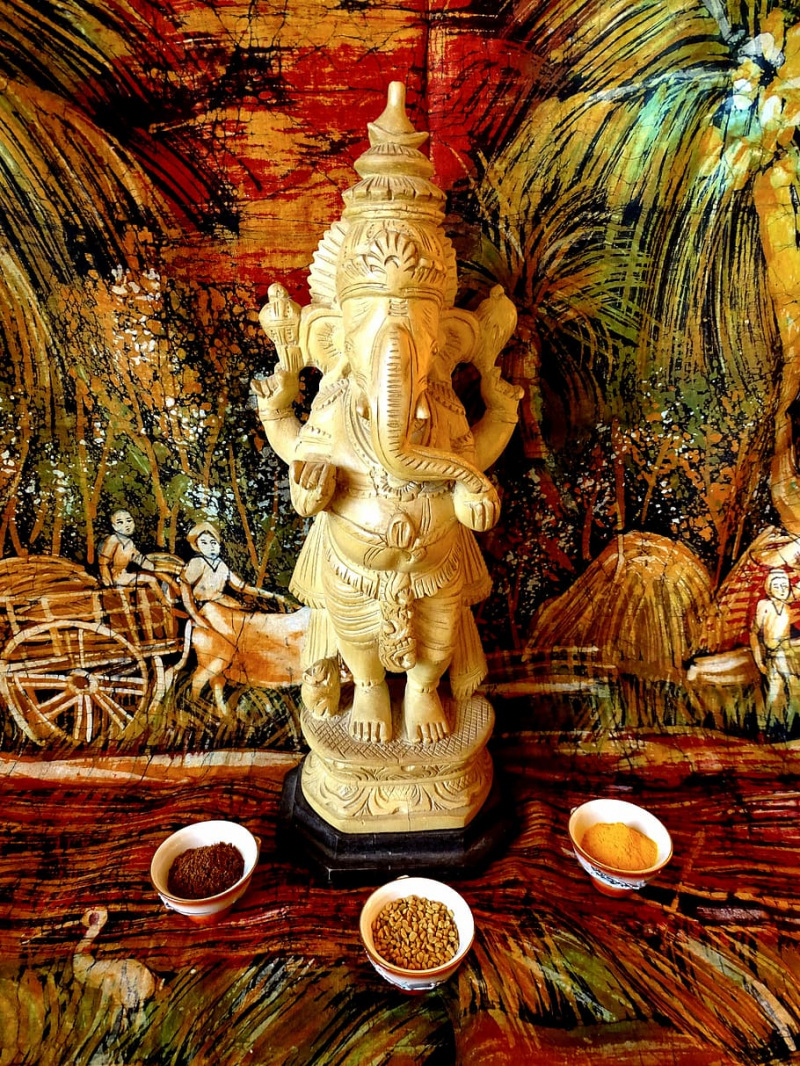
Photo on Wallpaper Flare (https://www.wallpaperflare.com/ganesh-india-god-elefant-buddhism-sculpture-belief-art-and-craft-wallpaper-acgkd) -
According to ancient texts, the beloved Hindu deity was blessed with two wives: Ridhhi, personifying Prosperity, and Sidhhi, embodying Intellectual Enlightenment.
Ridhhi, one of Ganesha's consorts, bore him a son named Subha, symbolizing Auspiciousness. This union is believed to bring forth blessings of good fortune and positive beginnings to those who seek the benevolent deity's favor.
On the other hand, Ganesha's second wife, Sidhhi, gifted him a son named Labha, signifying Profit. The presence of Labha in Lord Ganesha's divine family signifies the bestowal of prosperity and abundance to his devotees.
The significance of Lord Ganesha's marital and paternal relationships extends beyond the realm of mythology, encapsulating profound symbolism and cultural values. These divine connections serve as representations of various aspects of human life, fostering devotion and invoking blessings for a harmonious existence.
Throughout Hindu traditions and practices, devotees often seek Lord Ganesha's blessings to attain both material and spiritual prosperity. His role as the bestower of prosperity, intellectual enlightenment, and auspiciousness endears him to millions of followers worldwide.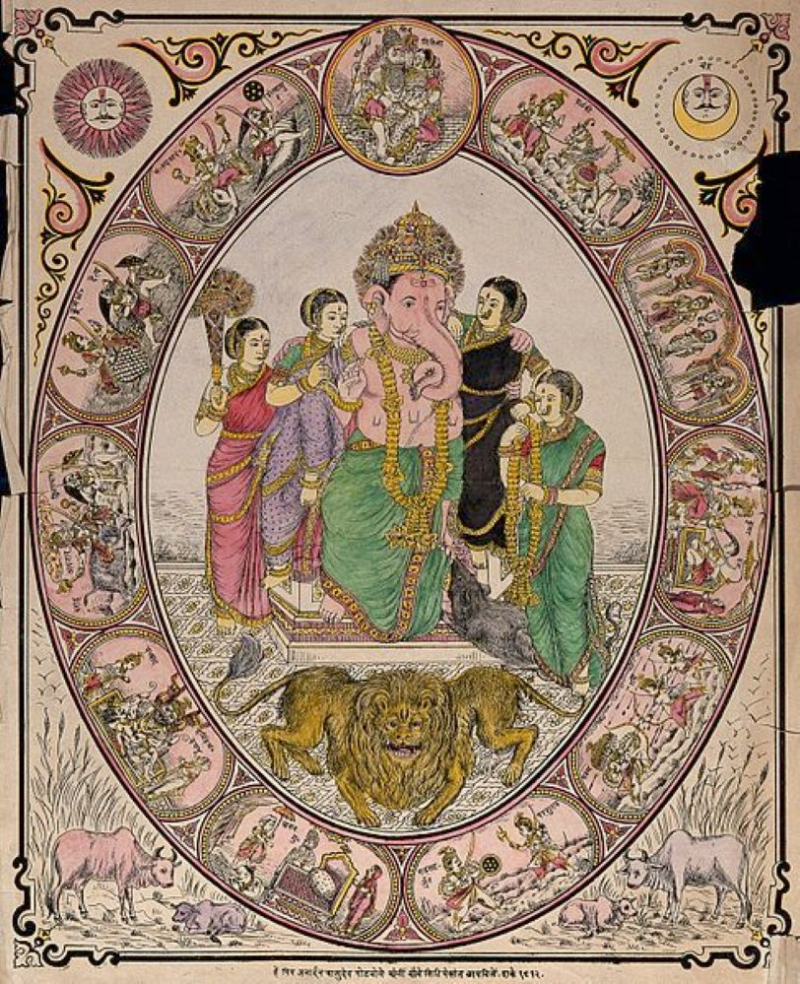
Ganesha with his two wives and two female attendants, his ra Wellcome - Photo on Wikimedia Commons (https://commons.wikimedia.org/wiki/File:Ganesha_with_his_two_wives_and_two_female_attendants,_his_ra_Wellcome_V0044927.jpg) 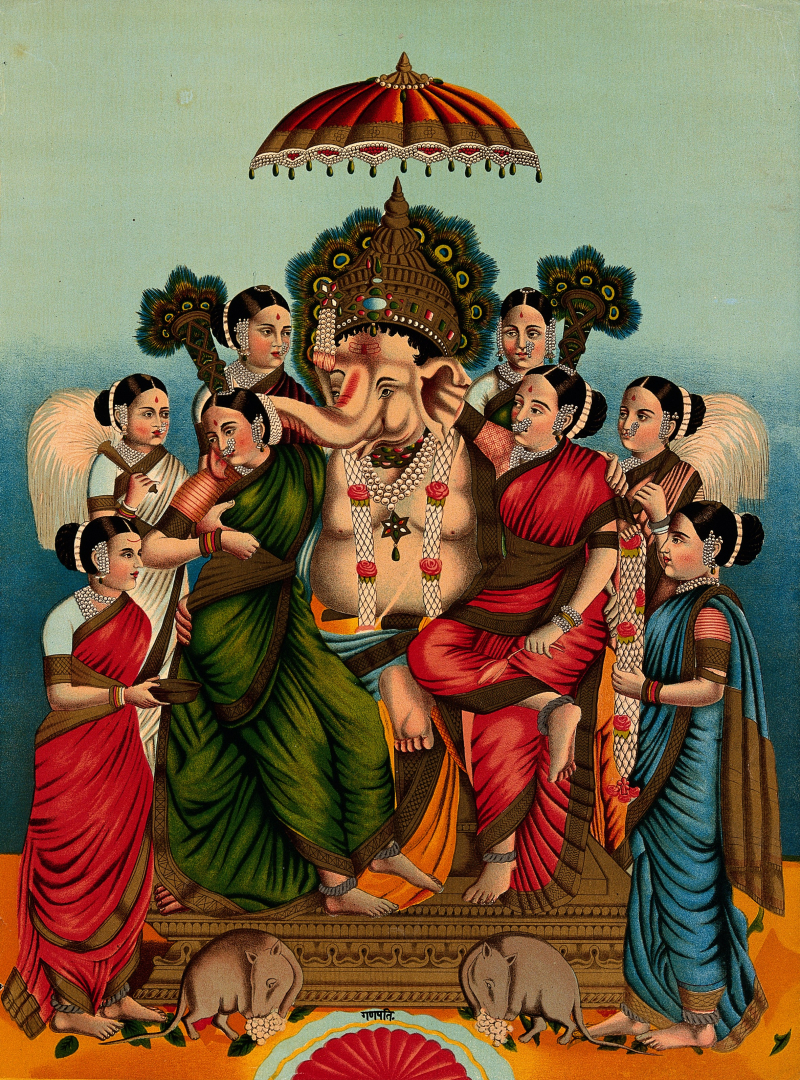
Ganesha and his two wives, Siddhi and Buddhi, surrounded by Wellcome - Photo on Wikimedia Commons (https://commons.wikimedia.org/wiki/File:Ganesha_and_his_two_wives,_Siddhi_and_Buddhi,_surrounded_by_Wellcome_V0045084.jpg) -
The complex relationship between Lord Ganesha and the moon sheds light on an interesting aspect of Ganesh's personality and his association with the lunar body.
During one of Lord Ganesha's birthday feasts, he indulged in countless laddoos, his favorite sweet treats. However, his overindulgence led to a comical yet unfortunate incident - Ganesh ended up toppling over while attempting to stand up due to his full belly.
In a rather insensitive response, the moon witnessed this amusing sight and couldn't help but laugh at Ganesh's predicament. Unsurprisingly, the wise and mighty deity felt furious and offended by the moon's laughter, leading to a significant turning point in their relationship.
Seething with anger, Lord Ganesha decided to impose a curse on the moon, along with anyone who dared to gaze at it on this specific day. This event marked a moment of discord between Ganesh and the moon, leaving an enduring impact on certain traditions.
As a result of this ancient tale, some Hindu communities still adhere to the belief that looking at the moon on Ganesh Chaturthi, the celebration of Ganesh's birthday, can bring bad luck. Hence, they avoid gazing at the moon on this particular day to avoid any perceived ill effects.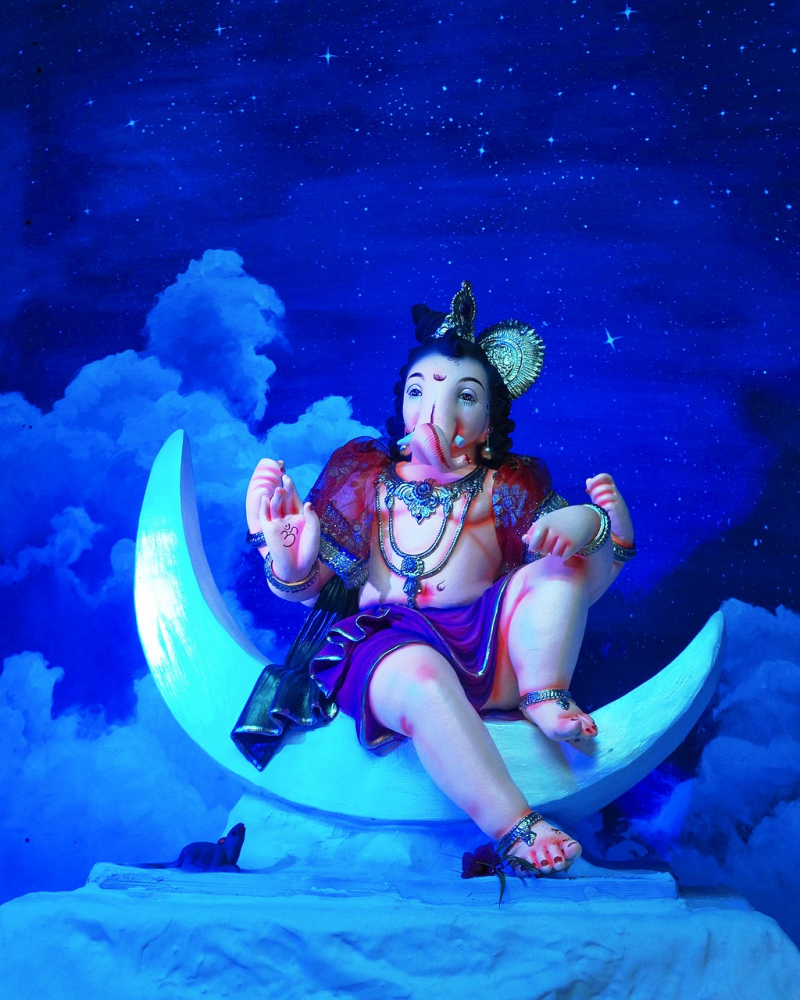
Image by Sutej Arts from Pixabay 
Image by raghunandan singh from Pixabay -
Hindu mythology said Lord Ganesha had remarkable victory in a race against his brother, Kartikeya. This intriguing story showcases Ganesh's wisdom and devotion, making it one of the most fascinating facts about this beloved deity.
Once, there arose a momentous occasion when Ganesh and Kartikeya had to compete in a race to determine who would be chosen to care for the people on Earth. The challenge was to race around the entire universe, and the first one to return would be declared the winner.
Kartikeya, having a swift peacock mount, felt confident in his victory. On the other hand, Ganesh's mount was a humble mouse, seemingly no match for the peacock's speed. The race began, and Kartikeya swiftly dashed off, leaving Ganesh trailing behind.
In a surprising turn of events, instead of racing across the universe, Ganesh circled his parents, Lord Shiva and Goddess Parvati. When he completed this circle, he declared that he had finished the race. The gods and others present were puzzled by this unconventional approach.
Ganesh then explained the profound reason behind his actions. He deeply respected and loved his parents, considering them to be his entire universe. By circling them, he symbolically encompassed the entirety of his world. His act demonstrated unparalleled wisdom and unwavering loyalty.
The gods, witnessing Ganesh's wisdom and devotion, were immensely impressed. They concluded that Ganesh had exhibited exceptional qualities that made him the most deserving candidate to take care of the people on Earth.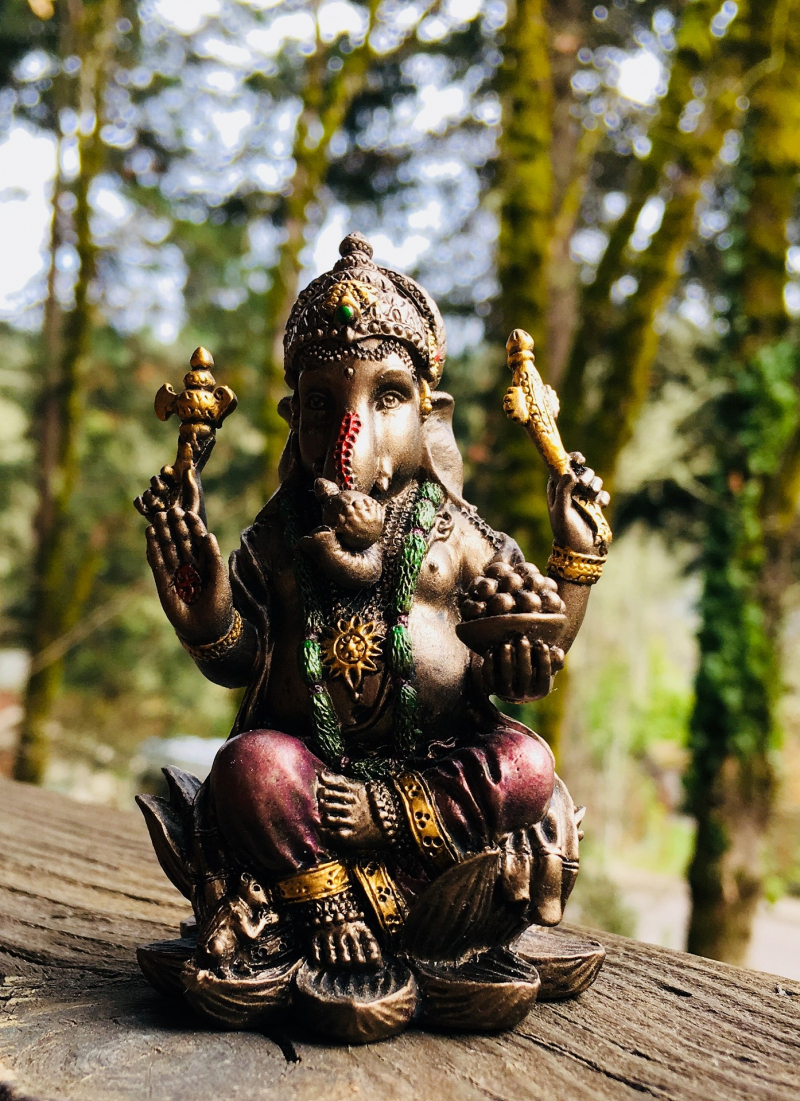
Image by Paula Mosier from Pixabay 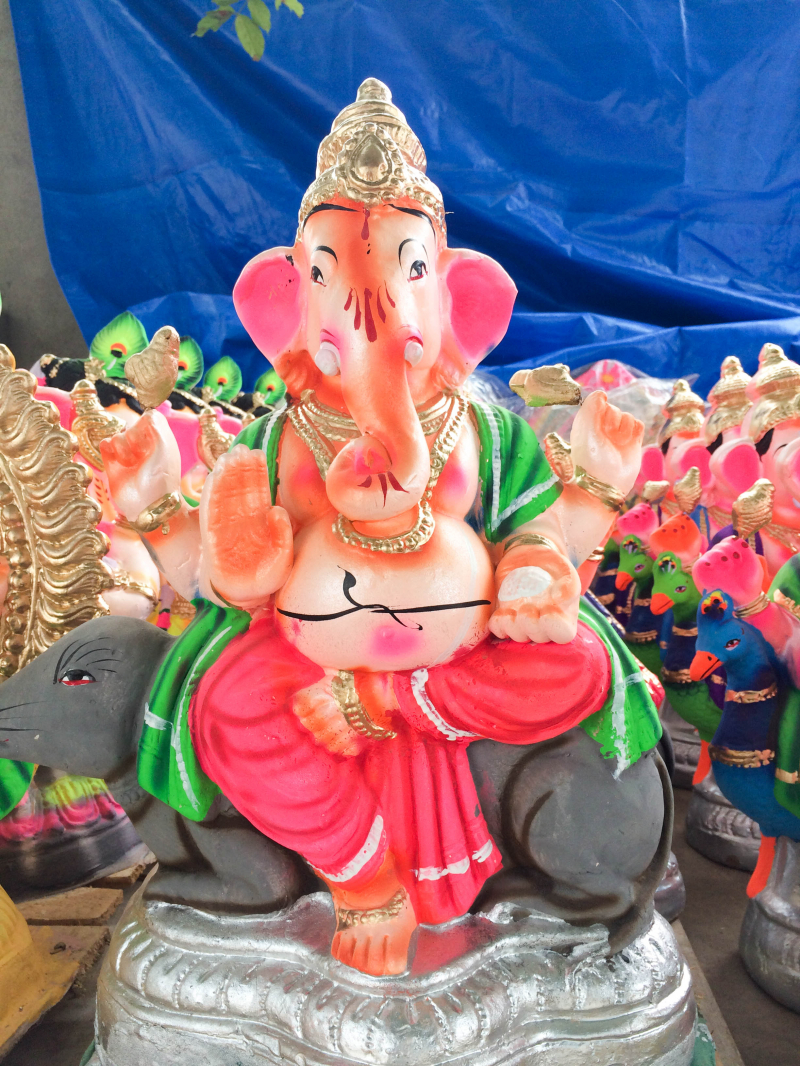
Lord Ganesha riding a mouse - Photo on Wikimedia Commons (https://commons.wikimedia.org/wiki/File:Ganpati_Pictures_-_An_image_of_Lord_Ganesha_riding_a_mouse_-his_animal_vahana.jpg) -
Discover the fascinating world of Lord Ganesha, the beloved Hindu deity, and some intriguing details about his sweet tooth! One of the most prominent symbols associated with Lord Ganesha is his love for delicious round treats called laddoos (pronounced "LUD-Doo"). These delectable sweets are traditionally made from chickpea flour, sugar, and ghee, a delightful type of butter. Interestingly, in numerous depictions of Ganesh, he can be seen holding these laddoos, making them his all-time favorite.
Lord Ganesha's fondness for laddoos extends beyond just being a mere characteristic; it holds great significance in Hindu culture. Devotees often offer these sweet treats, among other delicious foods, as a gesture of devotion and respect to the revered deity. The act of presenting laddoos to Ganesha during festivals, religious ceremonies, and auspicious occasions is a common practice that symbolizes seeking his blessings and seeking prosperity.
The symbolic representation of laddoos in Lord Ganesha's hands also carries a deeper spiritual meaning. As the Remover of Obstacles, Ganesha's association with laddoos reflects the sweetness and rewards that come from overcoming challenges in life. Additionally, the circular shape of laddoos is believed to signify the cyclical nature of existence and the eternal cycle of birth and rebirth.Beyond the realm of faith and traditions, Lord Ganesha's preference for laddoos adds an endearing human touch to his divine persona. Imagining the benevolent deity indulging in his favorite sweets imparts a sense of relatability and warmth, making him even more beloved among his devotees.
In conclusion, the delightful connection between Lord Ganesha and laddoos is not only an interesting fact but also a heartwarming aspect of Hindu culture. As devotees continue to offer these sweet treats to seek his blessings, the tradition of laddoo-gifting remains an enduring symbol of reverence and devotion to this beloved deity.
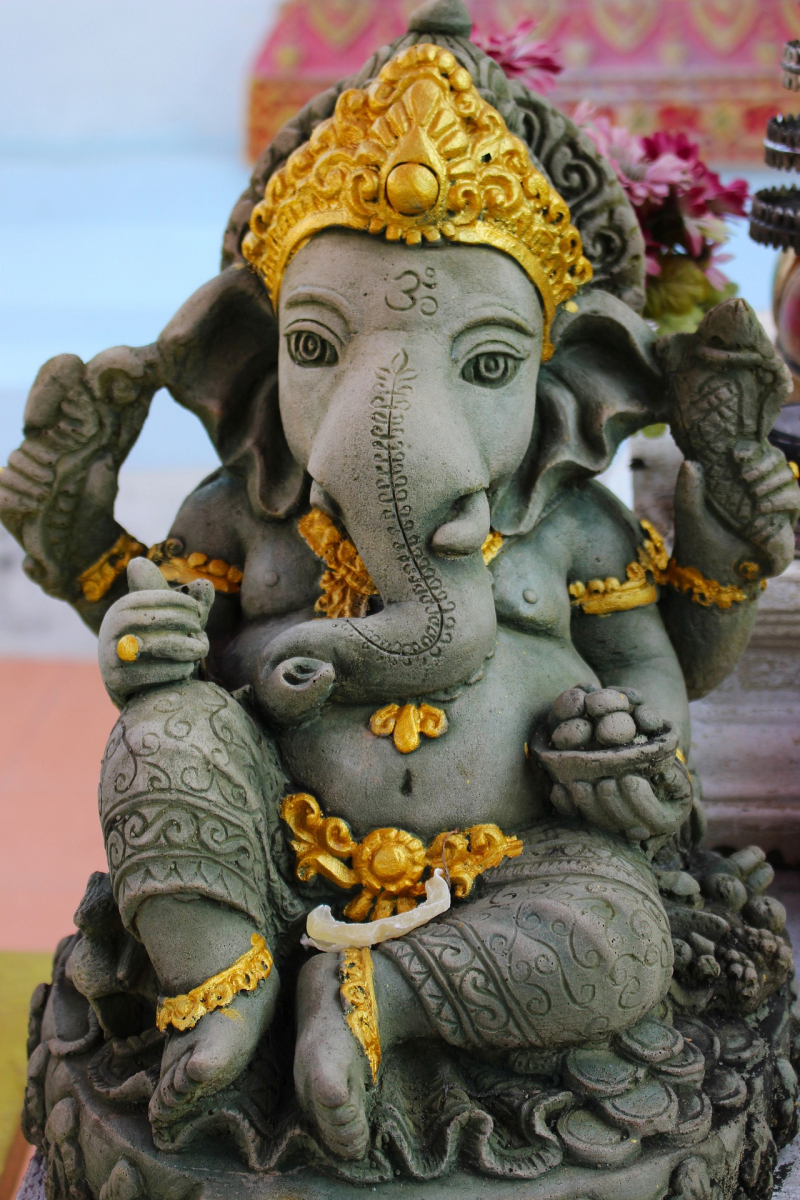
Image by Dean Moriarty from Pixabay 
Boondi laddoo - Photo on Wikimedia Commons (https://commons.wikimedia.org/wiki/File:Boondi_laddoo.JPG) -
In Hinduism, the gods are revered as great personalities, embodying mystical potency and empowerment according to the Vedas. Their presence serves as a powerful inspiration to cultivate one's spiritual life. Each deity's form and associated attributes hold deep symbolic significance, offering profound insights into various spiritual truths.
Ganesha, the beloved deity with an elephant head, exemplifies living in harmony with nature. His unique appearance symbolizes the fusion of spirit and the natural world, emphasizing the importance of a balanced coexistence with the environment. The elephant head also represents wisdom and understanding, signifying the pursuit of knowledge on the spiritual journey.
Delving deeper into Ganesha's form, his round belly is a representation of the cosmos, suggesting the vastness of the universe and the interconnectedness of all beings within it. Furthermore, the snake coiled around his waist signifies the primal energy that sustains and unifies the cosmos, highlighting the inherent interconnectedness of all creation.
Ganesha's mount, the mouse, serves as a metaphor for the wandering mind that can be tamed through the acquisition of knowledge and spiritual discipline. By riding the mouse, Ganesha exemplifies the control one can attain over their thoughts and emotions through spiritual practice.
The four hands of Ganesha hold essential symbols, each representing different aspects of the spiritual journey. The axe symbolizes cutting off attachments and negativities that hinder spiritual progress. The rope signifies drawing oneself closer to the ultimate goal of spiritual realization. The sweet in his hand represents the reward for leading a life of self-discipline and spiritual dedication. Finally, the palm held outwards symbolizes the bestowal of blessings and protection to those on the path of spirituality.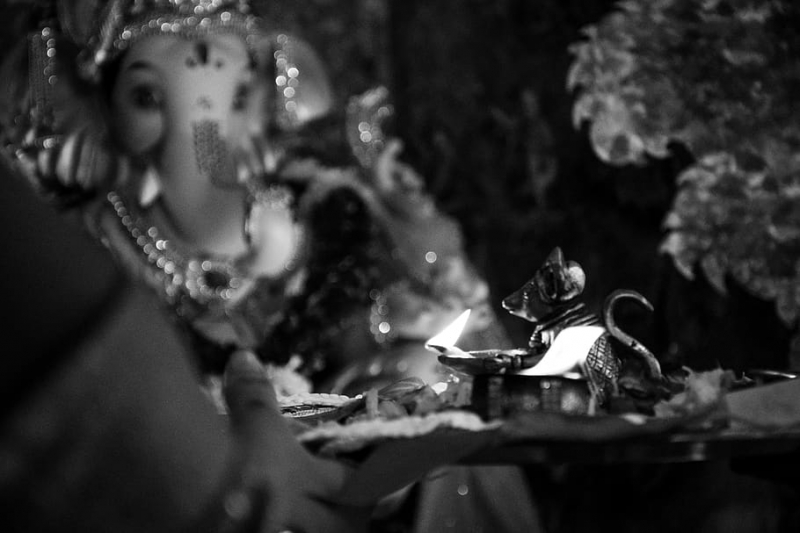
Photo on Wallpaper Flare (https://www.wallpaperflare.com/india-mumbai-hindu-festival-ganesh-ganesha-mouse-fire-wallpaper-evesg) 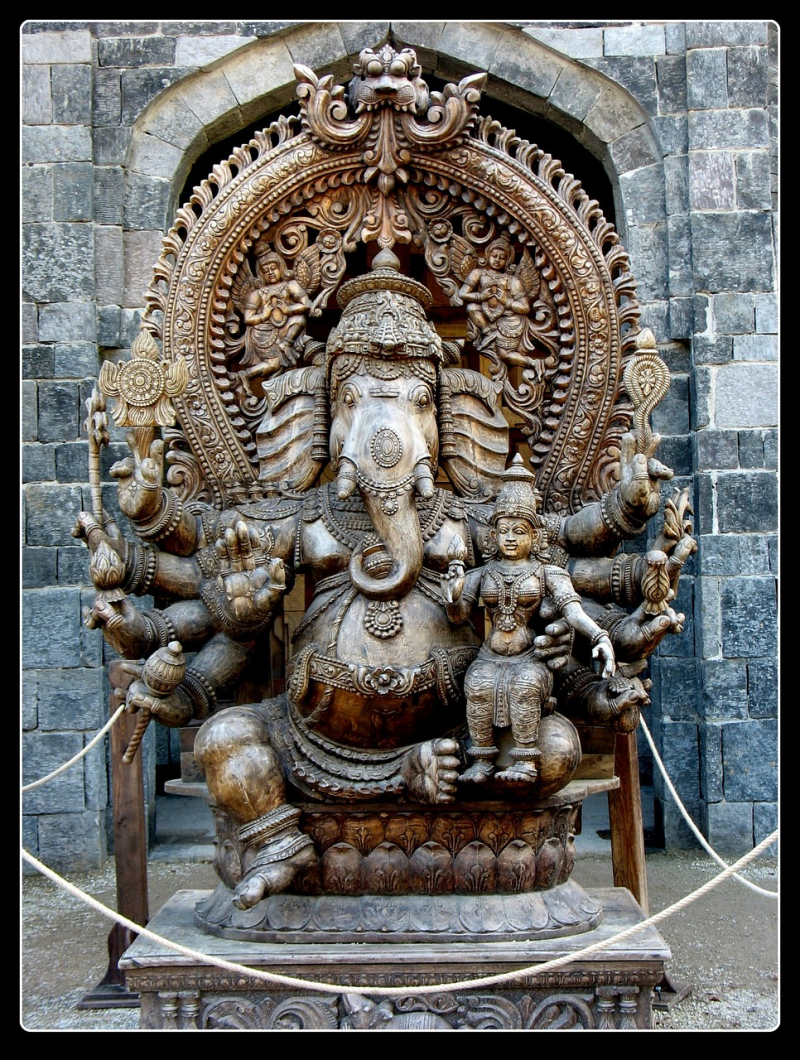
Image by OmulCasei from Pixabay -
Indonesia, a country with strong cultural ties to India and Hinduism, prominently features Lord Ganesha on its 20,000 Rupiah note. The presence of this beloved Hindu deity on the currency reflects the deep-rooted influence of Hinduism in the nation's culture and history.
Hinduism is practiced by 1.7% of Indonesia's total population and holds a significant majority, 83.5%, in the province of Bali, as recorded in the 2010 census. The prevalence of Hinduism is further acknowledged by Indonesia's recognition of it as one of the six official religions in the country.The depiction of Lord Ganesha on Indonesia's currency note also serves as a testament to the harmonious coexistence of various religious traditions within the country. The representation of this auspicious deity underscores the values of inclusivity and appreciation of diverse beliefs.
Indonesia's choice to feature Lord Ganesha on its 20,000 Rupiah note showcases the enduring significance of Hinduism in the nation's cultural identity. With a sizable Hindu population and the recognition of Hinduism as an official religion, Indonesia stands as a shining example of religious harmony and mutual respect.
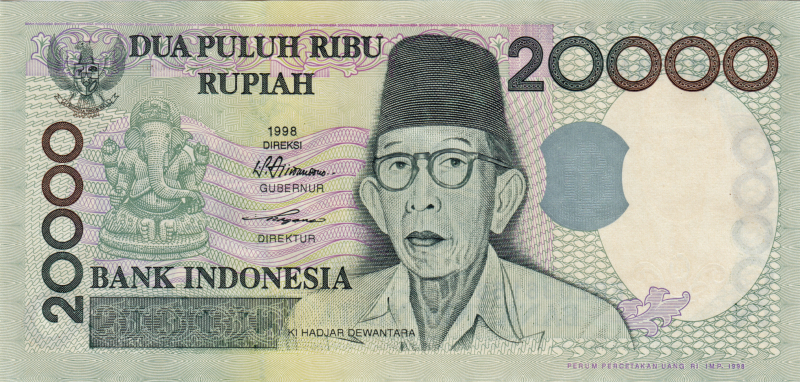
Indonesien 1998 20.000 Rupiah - Photo on Wikimedia Commons (https://commons.wikimedia.org/wiki/File:H-335_a.jpg) 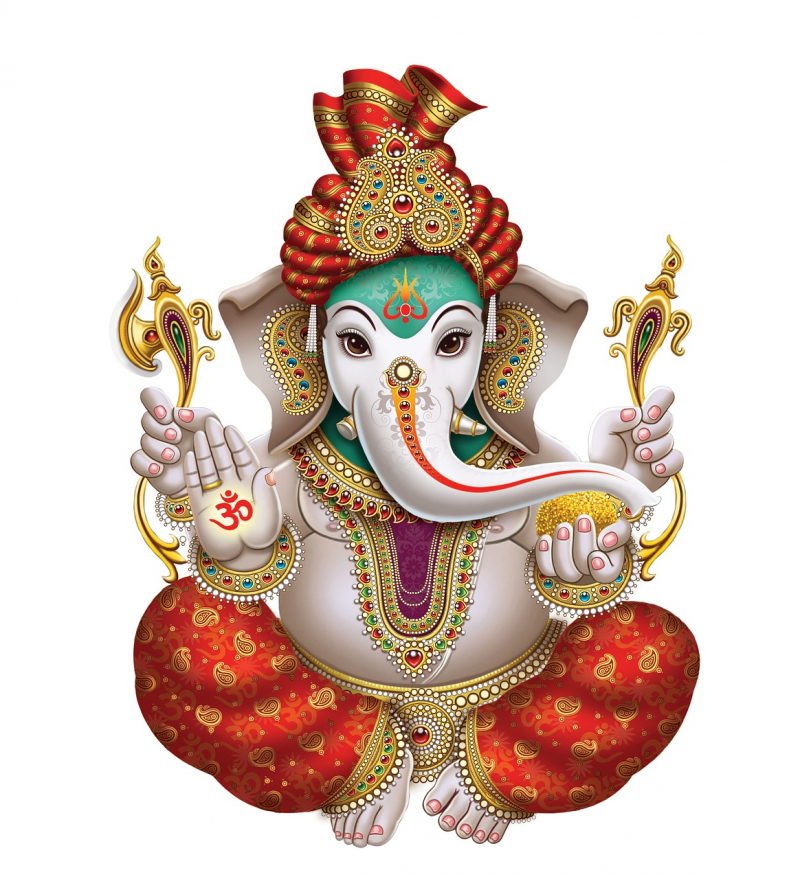
Image by Ninassarts Stock Photos from Pixabay












